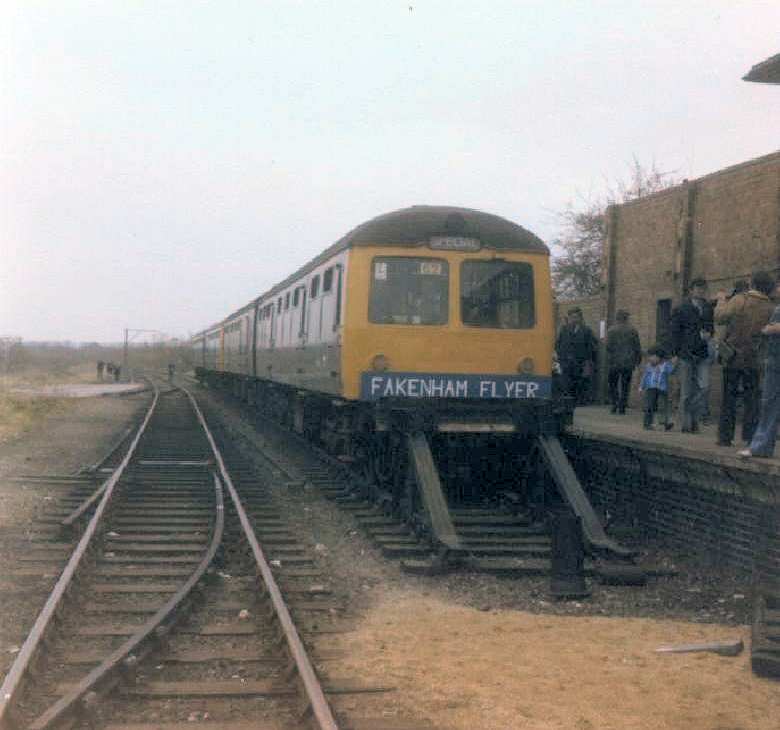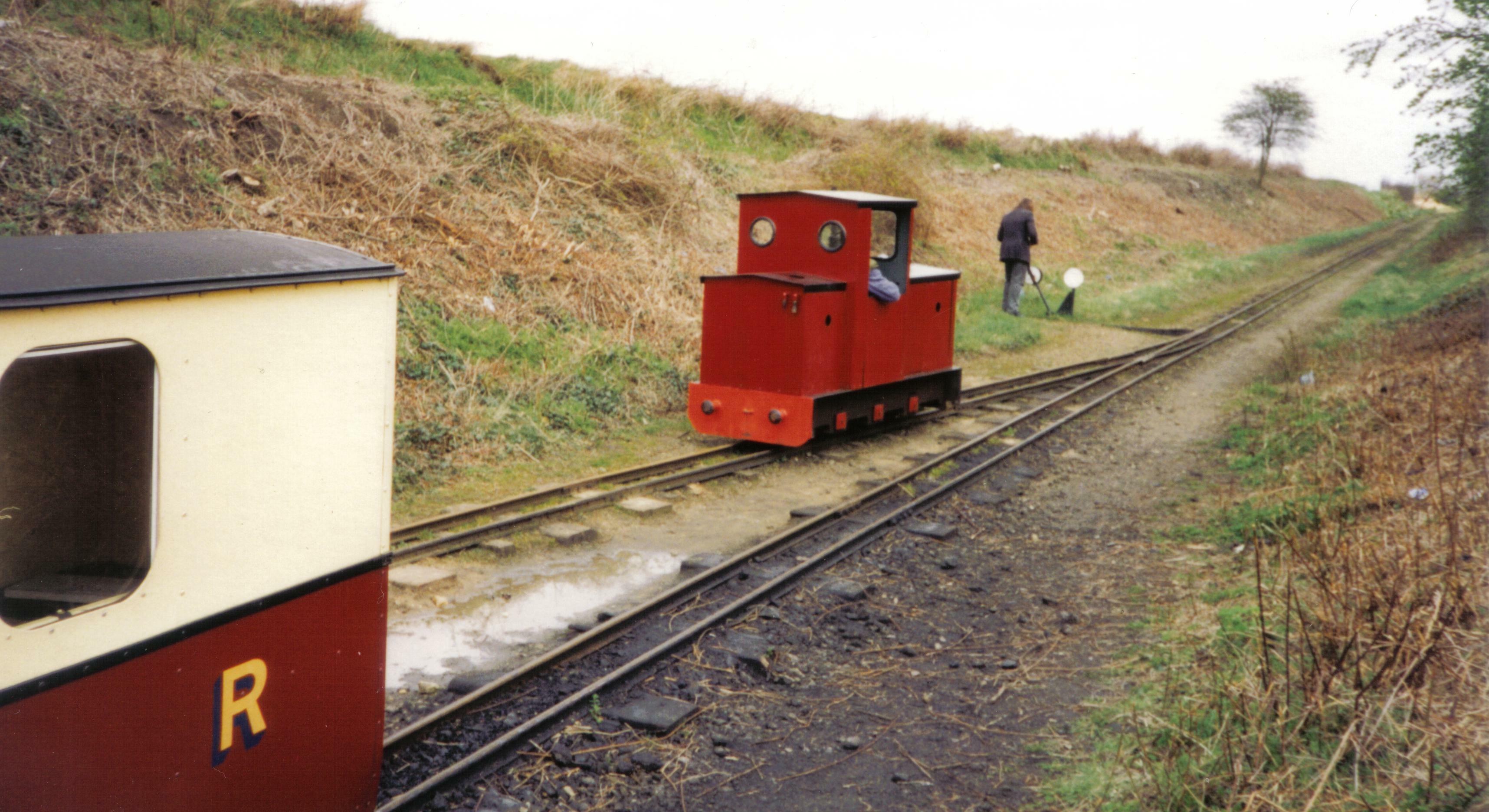|
Walsingham Railway Station
Walsingham was a railway station on the Wells and Fakenham Railway, later part of the Great Eastern Railway. It opened on 1 December 1857, and served the villages of Great Walsingham and Little Walsingham. It closed on 5 October 1964. The station buildings were purchased in 1967 by a group of members of the Russian Orthodox Church and developed into a small monastic community house, including St. Seraphim's Russian Orthodox church. The resident religious community has plans to further develop the site, including a permanent dual exhibition which will both showcase the religious life, in particular the art of icon painting, and also provide a historical review of the site's railway heritage.Details on thSt Seraphim's Trust webpage Since 1982, there has been a second station at Walsingham - the southern terminus of the narrow gauge Wells and Walsingham Light Railway The Wells and Walsingham Light Railway is a gauge heritage railway in Norfolk, England running between the ... [...More Info...] [...Related Items...] OR: [Wikipedia] [Google] [Baidu] |
Walsingham
Walsingham () is a civil parish in North Norfolk, England, famous for its religious shrines in honour of Mary, mother of Jesus. It also contains the ruins of two medieval monastic houses.Ordnance Survey (2002). ''OS Explorer Map 251 – Norfolk Coast Central''. . Walsingham is northwest of Norwich. The civil parish includes Little Walsingham and Great Walsingham, together with Egmere (a depopulated medieval village at ), and has an area of 18.98 km². At the 2011 census, it had a population of 819.Office for National Statistics & Norfolk County Council (2001). Census population and household counts for unparished urban areas and all parishes''. Retrieved 2 December 2005. The village's name means 'Homestead/village of Waels' people'. Walsingham is a major centre of pilgrimage. In 1061, according to the Walsingham legend, an Anglo-Saxon noblewoman, Richeldis de Faverches, had a vision of the Virgin Mary in which she was instructed to build a replica of the house of ... [...More Info...] [...Related Items...] OR: [Wikipedia] [Google] [Baidu] |
Walsingham, Wells & Walsingham Light Railway Station
Walsingham railway station is located in Walsingham, Norfolk, on the narrow gauge Wells and Walsingham Light Railway. It was opened in 1982. It is located north of the original station, which has been converted into a Russian Orthodox Church. Operational rail facilities consist of a single running line, plus a headshunt A headshunt (or escape track in the United States) is a short length of track provided to release locomotives at terminal platforms, or to allow shunting to take place clear of main lines. Terminal headshunt A 'terminal headshunt' is a short le ... and run round loop. There are no spring points, and access to the run round loop is controlled by ground frames, operated by the train crew. The station is not staffed, except on special operating days, and passengers purchase tickets from the guard.Payment instructions aW&WLR website Passenger facilities consist of a single rail-level platform, a waiting shelter, and a local information notice board and map. ... [...More Info...] [...Related Items...] OR: [Wikipedia] [Google] [Baidu] |
Railway Stations In Great Britain Closed In 1964
Rail transport (also known as train transport) is a means of transport that transfers passengers and goods on wheeled vehicles running on rails, which are incorporated in tracks. In contrast to road transport, where the vehicles run on a prepared flat surface, rail vehicles (rolling stock) are directionally guided by the tracks on which they run. Tracks usually consist of steel rails, installed on sleepers (ties) set in ballast, on which the rolling stock, usually fitted with metal wheels, moves. Other variations are also possible, such as "slab track", in which the rails are fastened to a concrete foundation resting on a prepared subsurface. Rolling stock in a rail transport system generally encounters lower frictional resistance than rubber-tyred road vehicles, so passenger and freight cars (carriages and wagons) can be coupled into longer trains. The operation is carried out by a railway company, providing transport between train stations or freight customer facil ... [...More Info...] [...Related Items...] OR: [Wikipedia] [Google] [Baidu] |
Railway Stations In Great Britain Opened In 1857
Rail transport (also known as train transport) is a means of transport that transfers passengers and goods on wheeled vehicles running on rails, which are incorporated in tracks. In contrast to road transport, where the vehicles run on a prepared flat surface, rail vehicles (rolling stock) are directionally guided by the tracks on which they run. Tracks usually consist of steel rails, installed on sleepers (ties) set in ballast, on which the rolling stock, usually fitted with metal wheels, moves. Other variations are also possible, such as "slab track", in which the rails are fastened to a concrete foundation resting on a prepared subsurface. Rolling stock in a rail transport system generally encounters lower frictional resistance than rubber-tyred road vehicles, so passenger and freight cars (carriages and wagons) can be coupled into longer trains. The operation is carried out by a railway company, providing transport between train stations or freight customer facili ... [...More Info...] [...Related Items...] OR: [Wikipedia] [Google] [Baidu] |
Beeching Closures In England
Beeching is an English surname. Either a derivative of the old English ''bece'', ''bæce'' "stream", hence "dweller by the stream" or of the old English ''bece'' "beech-tree" hence "dweller by the beech tree".''Oxford Dictionary of English Surnames'', Reaney & Wilson, Oxford University Press 2005 People called Beeching include:- * Henry Charles Beeching (1859–1919) clergyman, author and poet * Jack Beeching (John Charles Stuart Beeching) (1922–2001), British poet * Richard Beeching (1913–1985), chairman of British Railways * Thomas Beeching (1900–1971), English soldier and cricketer * Vicky Beeching Victoria Louise "Vicky" Beeching (born 17 July 1979) is an English musician and religious commentator. She is best known for her work in the American contemporary worship music genre, and has been described by ''The Guardian'' as "arguably the ... (Victoria Louise Beeching) (born 1979), British-born Christian singer See also * Beeching Axe, informal name fo ... [...More Info...] [...Related Items...] OR: [Wikipedia] [Google] [Baidu] |
Former Great Eastern Railway Stations
A former is an object, such as a template, gauge or cutting die, which is used to form something such as a boat's hull. Typically, a former gives shape to a structure that may have complex curvature. A former may become an integral part of the finished structure, as in an aircraft fuselage, or it may be removable, being using in the construction process and then discarded or re-used. Aircraft formers Formers are used in the construction of aircraft fuselage, of which a typical fuselage has a series from the nose to the empennage, typically perpendicular to the longitudinal axis of the aircraft. The primary purpose of formers is to establish the shape of the fuselage and reduce the column length of stringers to prevent instability. Formers are typically attached to longerons, which support the skin of the aircraft. The "former-and-longeron" technique (also called stations and stringers) was adopted from boat construction, and was typical of light aircraft built until the adv ... [...More Info...] [...Related Items...] OR: [Wikipedia] [Google] [Baidu] |
Fakenham East Railway Station
Fakenham East railway station was a railway station in the market town of Fakenham in the English county of Norfolk. The station was opened by the Norfolk Railway on 20 March 1849 and was originally named ''Fakenham''. Following nationalisation, it was renamed ''Fakenham East'' by British Railways on 27 September 1948; it was closed on 5 October 1964. This station is one of the possible sites protected in local plans, if needed as part of the Norfolk Orbital Railway's long-term plans to return trains to Fakenham. Any replacement station would be built on the throat of the original site, as sheltered housing has been built on the main station site. Other developments north of the former station make further extension impractical; instead the 'Norfolk Orbital' scheme proposes reopening towards the North Norfolk line at Holt and the Mid-Norfolk line at County School. The railway formation south of the station, as far as the three-arch viaduct over the River Wensum, is now own ... [...More Info...] [...Related Items...] OR: [Wikipedia] [Google] [Baidu] |
Wighton Halt Railway Station
Wighton Halt is a railway station serving the small village of Wighton, Norfolk. It is a public railway station, originally part of the standard gauge network, and now part of the narrow gauge Wells and Walsingham Light Railway. LNER Wighton Halt was a railway station on the Wells and Fakenham Railway, later part of the Great Eastern Railway. It was opened on 1 February 1924 by the London and North Eastern Railway and operated by them until rail nationalisation. It closed on 5 October 1964 as part of the Beeching cuts The Beeching cuts (also Beeching Axe) was a plan to increase the efficiency of the nationalised railway system in Great Britain. The plan was outlined in two reports: ''The Reshaping of British Railways'' (1963) and ''The Development of the M ... on the British railway network. W&WLR In 1979 construction work began to reopen four miles of the disused railway line between Wells and Walsingham. The narrow gauge Wells & Walsingham Light Railway began oper ... [...More Info...] [...Related Items...] OR: [Wikipedia] [Google] [Baidu] |
Wells And Walsingham Light Railway
The Wells and Walsingham Light Railway is a gauge heritage railway in Norfolk, England running between the coastal town of Wells-next-the-Sea and the inland village of Walsingham. The railway occupies a section of the trackbed of the former Wymondham to Wells branch which was closed to passengers in stages from 1964 to 1969 as part of the Beeching cuts. Other parts of this line, further south, have also been preserved by the Mid-Norfolk Railway. Despite its miniature dimensions, the Wells and Walsingham Light Railway is a "public railway", indicating that its operation is established by Act of Parliament. The original establishment of the preserved line was authorised by the Wells and Walsingham Light Railway Order 1982, the terms of which were altered under the subsequent Wells and Walsingham Light Railway (Amendment) Order 1994. Prior to 1982 the gauge Romney, Hythe and Dymchurch Railway had traded as "The World's smallest public railway", a phrase sometimes quoted by the ... [...More Info...] [...Related Items...] OR: [Wikipedia] [Google] [Baidu] |
Icon
An icon () is a religious work of art, most commonly a painting, in the cultures of the Eastern Orthodox, Oriental Orthodox, and Catholic churches. They are not simply artworks; "an icon is a sacred image used in religious devotion". The most common subjects include Christ, Mary, saints and angels. Although especially associated with portrait-style images concentrating on one or two main figures, the term also covers most religious images in a variety of artistic media produced by Eastern Christianity, including narrative scenes, usually from the Bible or the lives of saints. Icons are most commonly painted on wood panels with egg tempera, but they may also be cast in metal, carved in stone, embroidered on cloth, done in mosaic or fresco work, printed on paper or metal, etc. Comparable images from Western Christianity can be classified as "icons", although "iconic" may also be used to describe a static style of devotional image. In the Greek language, the term for icon pain ... [...More Info...] [...Related Items...] OR: [Wikipedia] [Google] [Baidu] |






